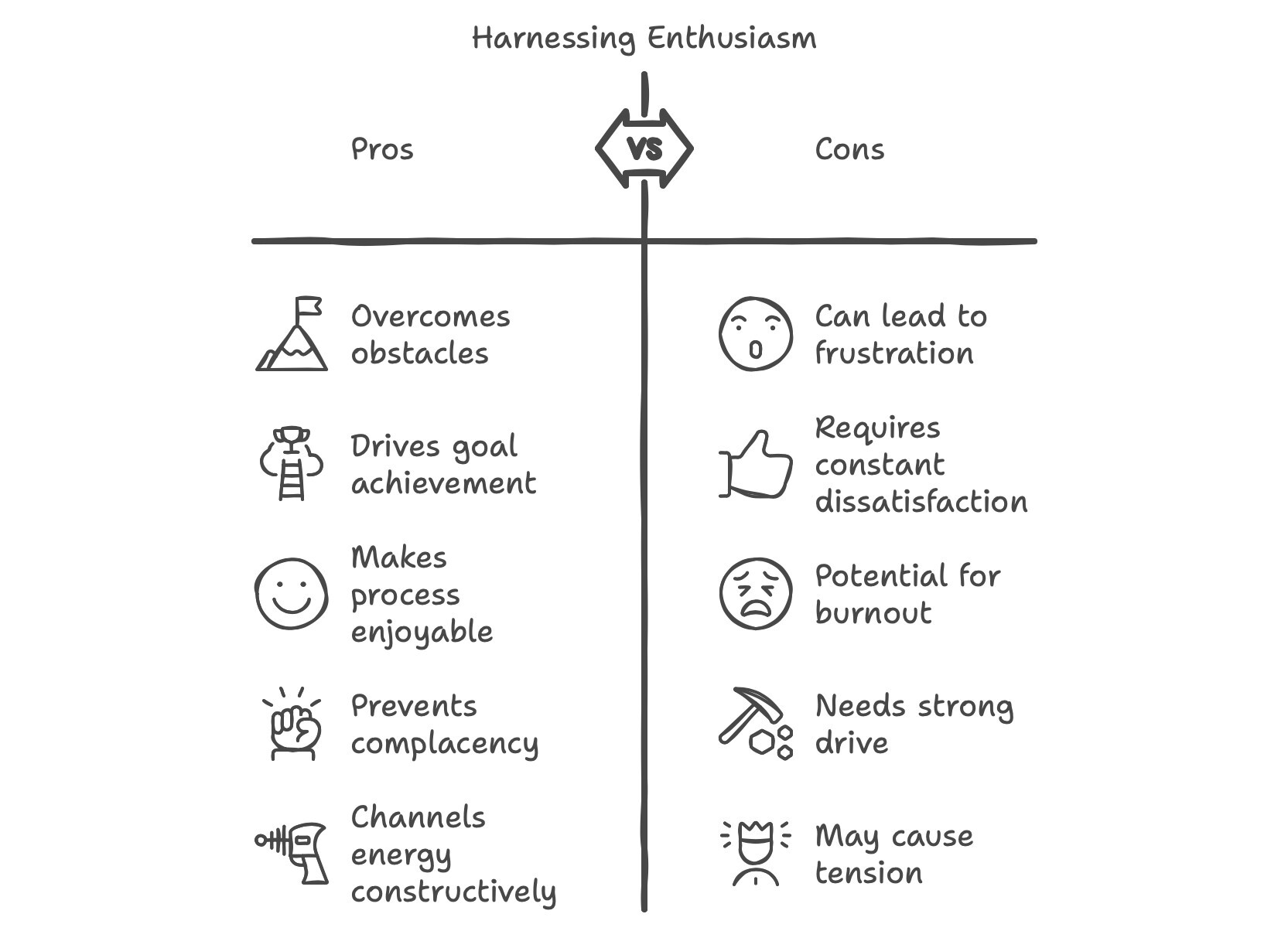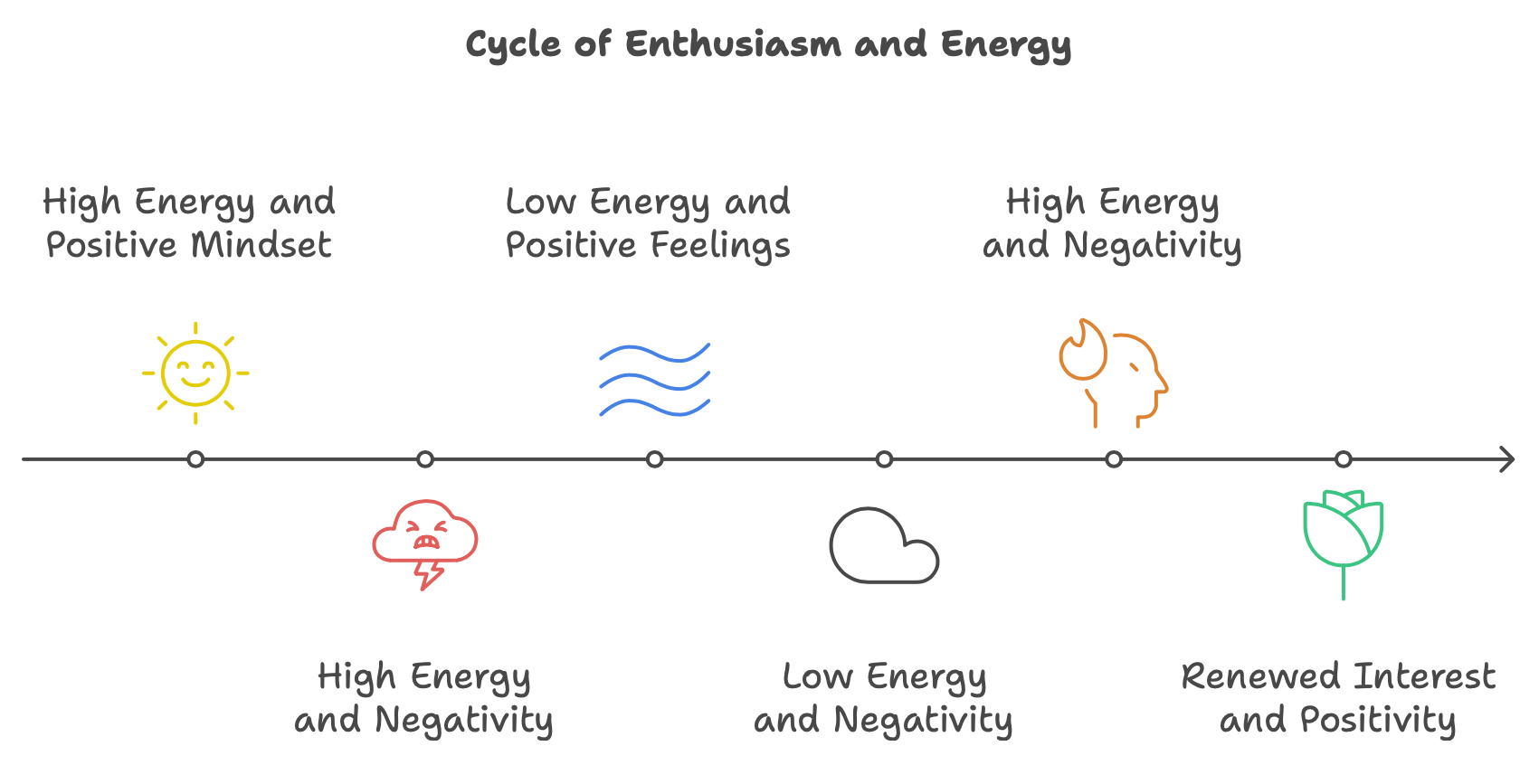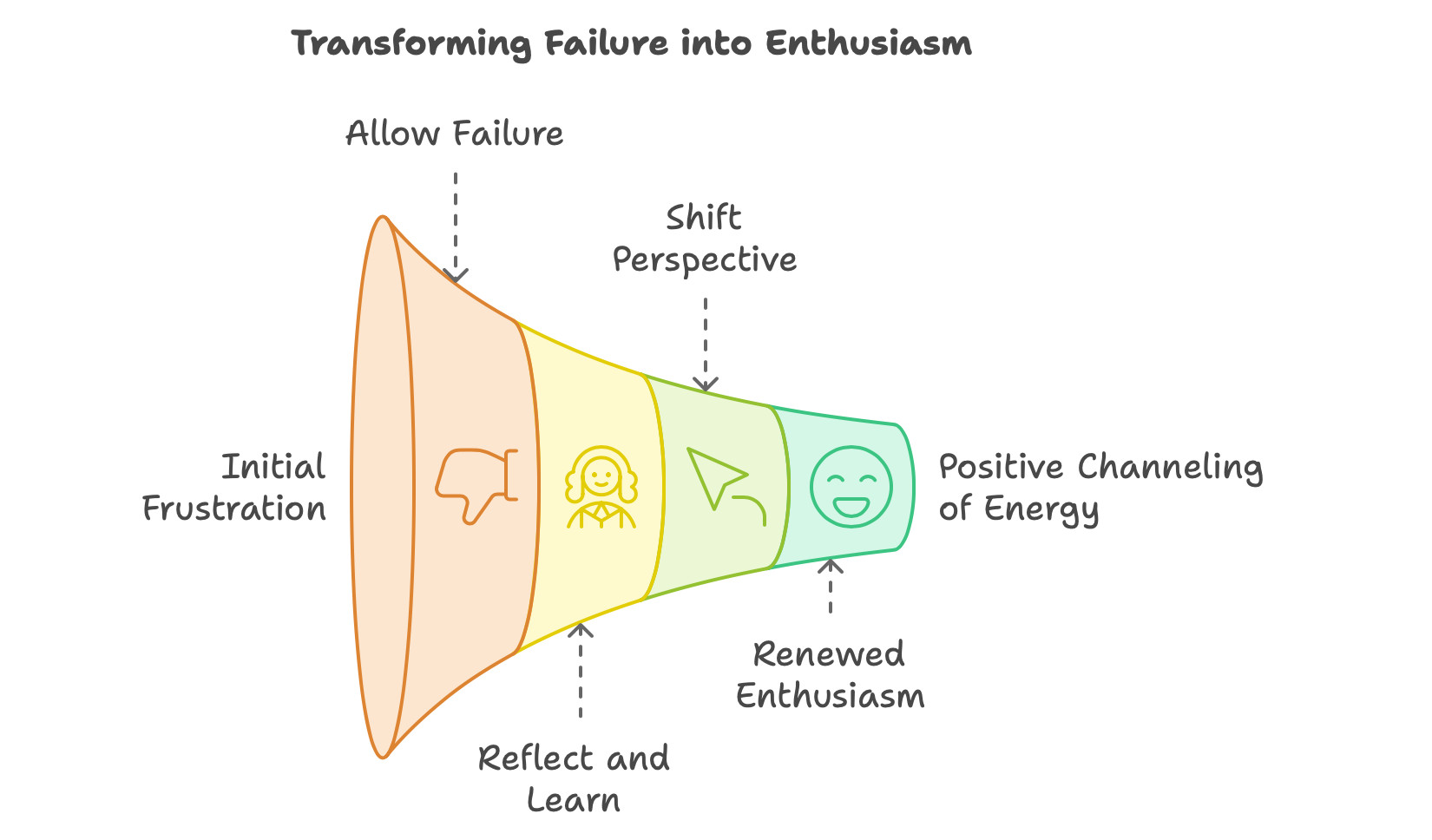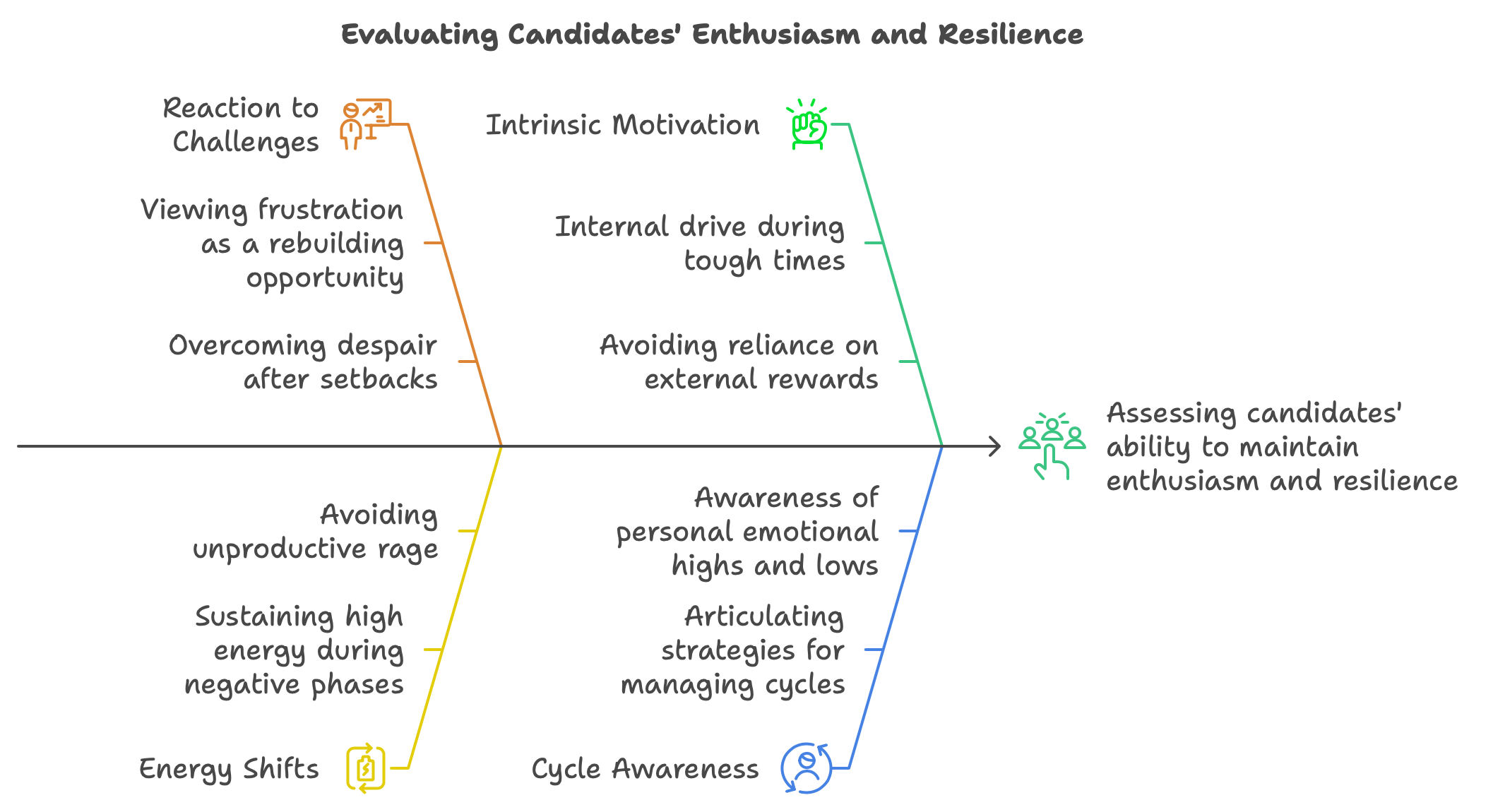Enthusiasm: How I Turn “Have to” into “Want to” and Lead with Passion
- How does enthusiasm develop, and what does it depend on?
- How can you use negative factors to your advantage?
- What mistakes do leaders make when motivating their teams?
I’m Olga Fedoseeva, founder of UnitiQ - a service that helps businesses find right talents (talent acquisition) and build efficient teams (People Strategy and Talent Management).
With 20+ years in Talent Acquisition and HR, I’ve seen how crucial enthusiasm is to achieving goals, whether for individuals, teams, or entire organizations. In this article, I want to dive deep into the origins of enthusiasm and how to channel it into productive, goal-driven energy.
- How can you use negative factors to your advantage?
- What mistakes do leaders make when motivating their teams?
I’m Olga Fedoseeva, founder of UnitiQ - a service that helps businesses find right talents (talent acquisition) and build efficient teams (People Strategy and Talent Management).
With 20+ years in Talent Acquisition and HR, I’ve seen how crucial enthusiasm is to achieving goals, whether for individuals, teams, or entire organizations. In this article, I want to dive deep into the origins of enthusiasm and how to channel it into productive, goal-driven energy.
Understanding Enthusiasm
For me, enthusiasm isn’t just about bursts of energy or a sense of purpose; it often arises from a powerful lack of something important. Winston Churchill once said, "Success is going from failure to failure without losing enthusiasm." This captures the essence of enthusiasm—it’s the force that drives us through obstacles, fueled by the gap between our current state and our ambitions.

I like to think of enthusiasm as a form of tension. Though these words have different emotional undertones, they share a common root: the energy that comes from disparity. Tension is the difference between what exists and our ideal of how things should be; enthusiasm thrives on this energy generated by differing potentials.
Tension is the opposite of disappointment and closely mirrors frustration. Frustration carries an intention to restore disrupted plans, whereas disappointment often signals giving up and accepting loss. Enthusiasm channels this energy toward a goal, indirectly making the process of reaching the goal enjoyable. For enthusiasm to exist, two elements must be present: dissatisfaction with the status quo and a strong drive to achieve something better.
This dissatisfaction keeps us from getting too comfortable. When we hear someone express irritation, it’s often a prelude to action; we see them enthusiastically demolishing obstacles. It could be us in that position—the key is directing this energy constructively.
How to Channel Energy Constructively: The Cyclical Nature of Enthusiasm
I’ve observed that our moods and energy levels naturally cycle. High energy combined with a positive mindset is often called enthusiasm or passion. However, when positivity shifts to negativity, yet energy remains high, this can manifest as rage. This dynamic can be seen in history and everyday life, such as the revolutionary spirit captured in the anthem born during the Paris Commune of 1871:
_"We will destroy the world of violence
To its foundations, and then
We will build our new world;
He who was nothing will become everything."_
In daily life, the cycle includes subtle phases: initially, high energy and excitement fuel action. Over time, as tasks become routine, energy dips, and we enter a state of contentment. We’re no longer pushing; we’re watching. Leads come in, sales tick over, and everything seems fine.
_"We will destroy the world of violence
To its foundations, and then
We will build our new world;
He who was nothing will become everything."_
In daily life, the cycle includes subtle phases: initially, high energy and excitement fuel action. Over time, as tasks become routine, energy dips, and we enter a state of contentment. We’re no longer pushing; we’re watching. Leads come in, sales tick over, and everything seems fine.

But low energy mixed with positive feelings—a state often mistaken for contentment—is one of the least productive phases in business. Everything slows, a crisis brews, and soon it becomes clear that something needs to change.
As positivity gives way to negativity, frustration kicks in, and energy levels rise. This is a critical moment: energy and emotional tone shift simultaneously. High energy mixed with negativity can turn into anger—a state where at least some action begins. However, sustaining this anger is impossible; energy eventually drains, leading to a low-energy, negative state of disappointment or grief.
This is the final stage of the crisis cycle. Eventually, new interest reignites, positivity returns, and energy levels rise once more, leading us back to enthusiasm. This renewed passion becomes the fuel for building something new.
Turning “Have to” into “Want to”: How I Guide My Teams and Evaluate Candidates
Directing energy into a positive channel involves recognizing when to allow failure and frustration. I often reflect on the animated movie “Cars,” where the wise Judge challenges Lightning McQueen to a race, knowing that the loss would teach McQueen a valuable lesson. On the surface, McQueen’s youth and power seem unbeatable, but a single misstep sends him crashing into cacti—a humbling, transformative experience that shifts his entire approach.

This kind of directed failure isn’t a universal tool; it takes nuanced leadership to know when to let someone falter and when to offer support. I use this understanding to guide my teams, allowing moments of failure and frustration to evolve naturally into renewed enthusiasm.
Evaluating Candidates: Recognizing Enthusiasm and Potential
In my role, I often evaluate candidates based on the enthusiasm and psychological aspects discussed here. I look for their ability to harness tension and turn dissatisfaction into productive energy. My evaluation process involves understanding their cycles of motivation and energy, especially how they handle frustration and disappointment.
Read our articles related to psychological fit of the candidates during talent acquisition process:
Hiring with Integrity: How Avoiding Jerks Builds Stronger Teams
The Science of Talent Acquisition: How Structured Evaluation Predicts Success
Why Choose UnitiQ over Traditional Recruiting Firms?
Unlocking Hidden Potential for Extraordinary Achievement
I pay attention to:
- Reaction to Challenges: I assess how candidates react to setbacks. Do they see frustration as a chance to rebuild, or do they fall into despair? The ability to bounce back from disappointment with renewed enthusiasm is a key trait I look for.
- Energy Shifts: I evaluate whether they can sustain high energy during negative phases without letting it spiral into unproductive rage. This tells me a lot about their resilience and emotional intelligence.
Read our articles related to psychological fit of the candidates during talent acquisition process:
Hiring with Integrity: How Avoiding Jerks Builds Stronger Teams
The Science of Talent Acquisition: How Structured Evaluation Predicts Success
Why Choose UnitiQ over Traditional Recruiting Firms?
Unlocking Hidden Potential for Extraordinary Achievement
I pay attention to:
- Reaction to Challenges: I assess how candidates react to setbacks. Do they see frustration as a chance to rebuild, or do they fall into despair? The ability to bounce back from disappointment with renewed enthusiasm is a key trait I look for.
- Energy Shifts: I evaluate whether they can sustain high energy during negative phases without letting it spiral into unproductive rage. This tells me a lot about their resilience and emotional intelligence.

- Intrinsic Motivation: I delve into what truly drives them. Are they motivated by external rewards, or do they have an internal drive that propels them even when times are tough? This is crucial for maintaining enthusiasm over the long term.
- Cycle Awareness: I also observe whether they are aware of their own emotional cycles and if they know how to navigate through the highs and lows effectively. Candidates who can articulate their strategies for managing these cycles often have a much more sustainable approach to enthusiasm and productivity.
This process isn’t just about finding people who are always upbeat—it’s about discovering those who can handle the full emotional spectrum, use their frustrations wisely, and turn low points into learning moments that fuel their drive.
Common Mistakes in Motivating Teams
Ignoring Emotional Cycles: One of the biggest mistakes I’ve seen, especially in sales, is trying to keep teams perpetually motivated with constant meetings filled with either harsh criticism or overly positive cheerleading. Both approaches fail to respect the natural ups and downs that drive true enthusiasm.

Overloading with Rewards: Trying to stimulate enthusiasm by throwing more incentives at employees who are already doing well often backfires. If not carefully managed, these efforts can become counterproductive, as real challenges remain unaddressed, and frustration shifts toward leadership instead of the task at hand.
Skipping the Lows: Many mistakes boil down to trying to avoid the natural cycle of ups and downs. Leaders often try to maintain perpetual productivity by skipping the low phases, but this only prolongs the inevitable slump.
Read our articles related to motivation during Talent Acquisition and Talent Management:
No Money, No Problem: 10 Ways to Motivate Your Team
Implementing KPIs Without Losing Your Team’s Trust and Motivation
The Motivation Matrix: Exploring What Drives You and Your Team
Empowering Employees Through Learning: How Skill Development Drives Loyalty and Retention
Managing the Cycle of Enthusiasm and Productivity
No one can maintain peak performance indefinitely. Understanding the natural cycle of highs and lows helps me as a leader to guide my team without pushing them to burnout. It’s not about erasing the lows but about navigating them effectively. Managed well, calm moments become flashes of insight, frustration turns into determination, disappointment into constructive reflection, and enthusiasm drives innovation.
Thoughts
Enthusiasm isn’t just a fleeting mood—it’s the powerful energy that comes from tension, ambition, and the willingness to turn frustration into opportunity. By understanding and respecting these cycles, both in myself and my team, I’ve found that I can harness this energy for sustained progress. As a leader, it’s about knowing when to encourage, when to let frustrations play out, and when to pivot toward constructive action. It’s in this balanced approach that we transform “have to” into “want to,” creating a motivated and resilient path to our goals.
I recommend you to read:
Mastering Delegation: 5 Rules to Empower Your Team and Avoid Common Mistakes
Aligning Leadership Actions with Team Needs for Greater Impact
Work as Your Own Trainer | Improve with Daily Challenges
Mastering Delegation: 5 Rules to Empower Your Team and Avoid Common Mistakes
Aligning Leadership Actions with Team Needs for Greater Impact
Work as Your Own Trainer | Improve with Daily Challenges
If you're looking for excellence in Talent Acquisition and Building Strong Teams
Assessing Candidate Motivation for Emotional and Cultural Fit
At UnitiQ, we go beyond traditional hiring by deeply understanding candidates' motivations through psychological assessments. This allows us to identify individuals who resonate with your company's emotional and cultural environment. By evaluating their intrinsic drivers, we ensure that new hires are not just skilled, but also passionate and aligned with your values. This personalized approach reduces turnover, boosts engagement, and fosters long-term success, helping you build a team that's not only productive but also truly connected to your mission.
We are excited to help you with Talent Acquisition and HR tasks, please contact me, Olga Fedoseeva, Fonder at UnitiQ, directly:
My Telegram
My LinkedIn
We are excited to help you with Talent Acquisition and HR tasks, please contact me, Olga Fedoseeva, Fonder at UnitiQ, directly:
My Telegram
My LinkedIn
